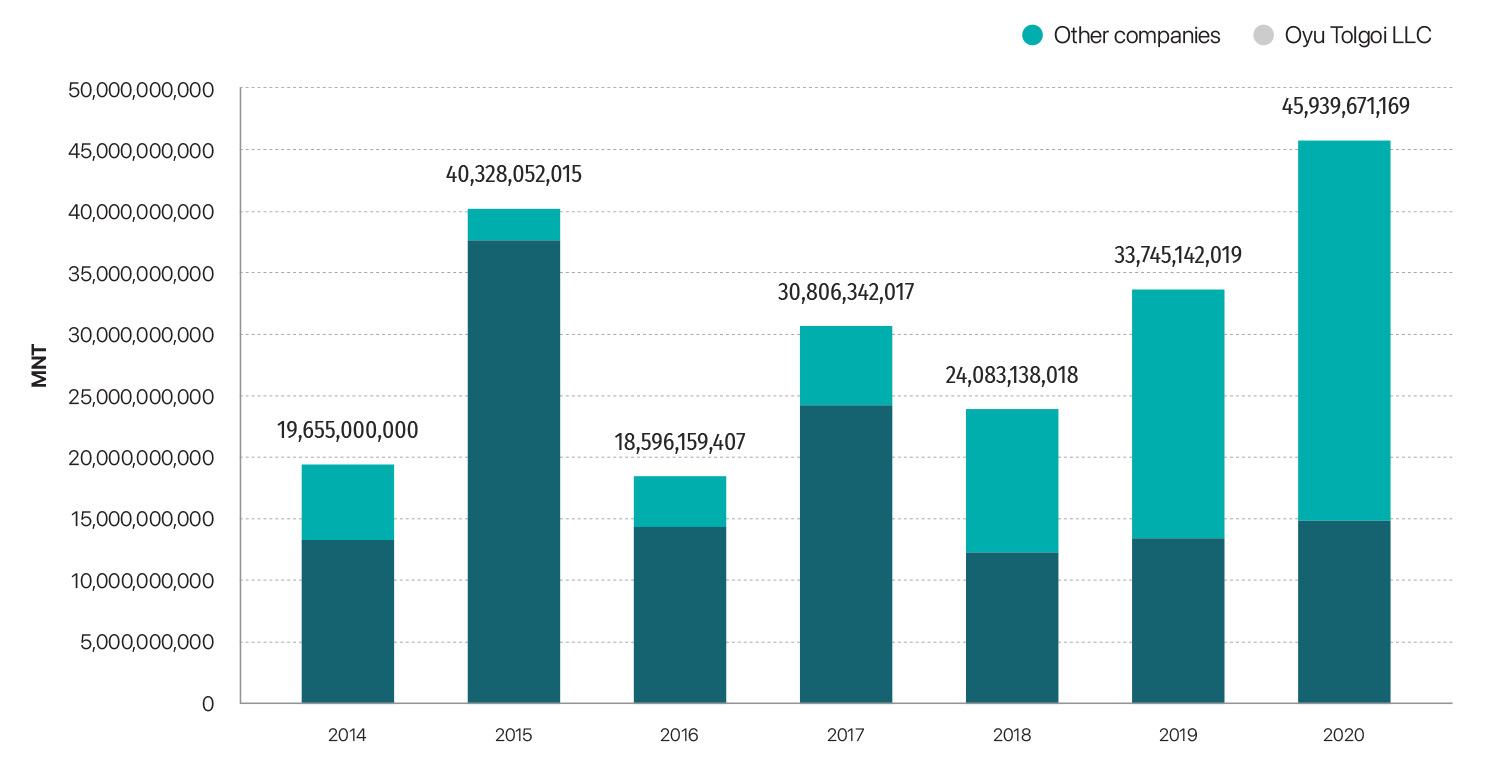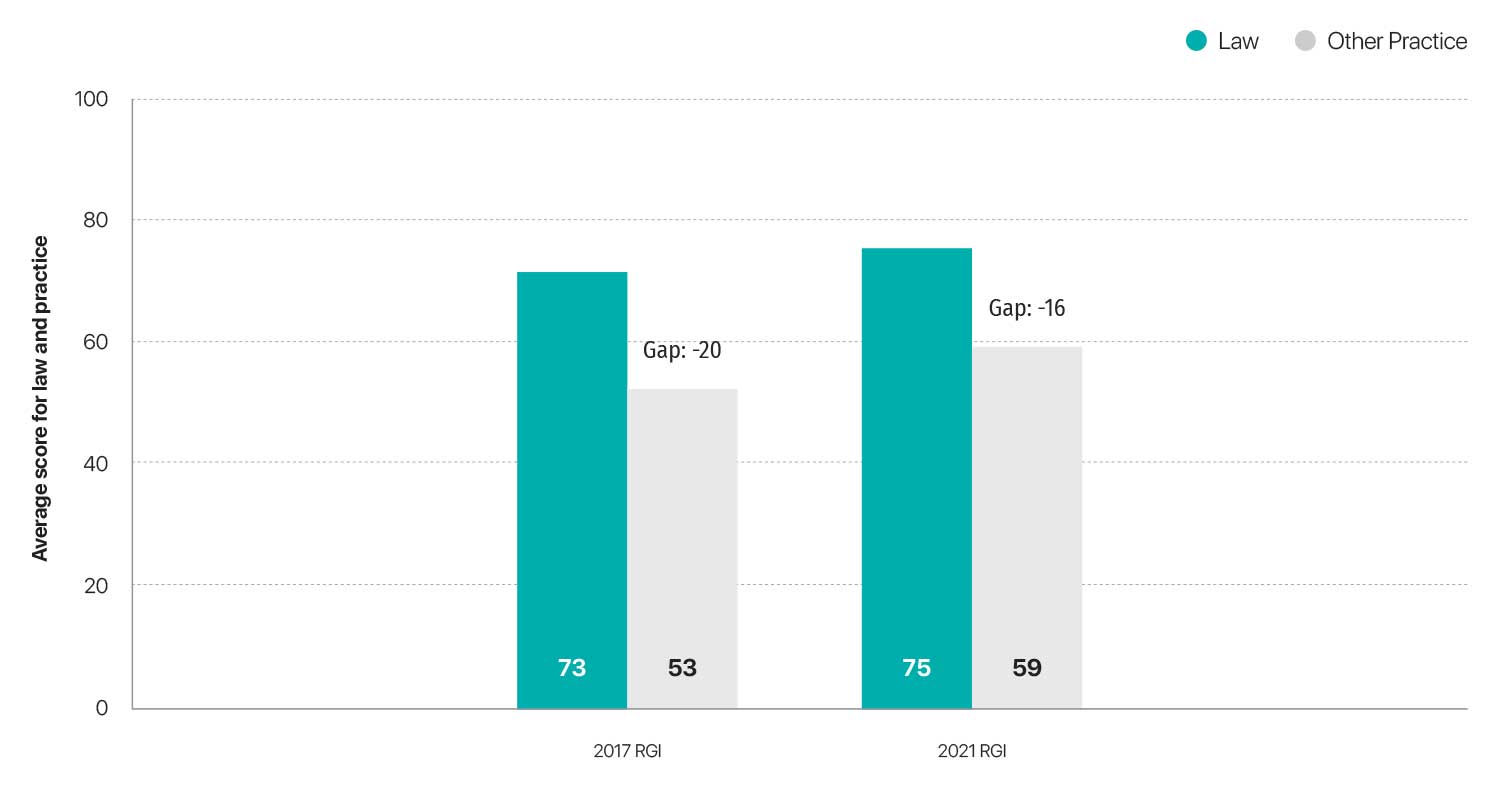Donation to the government organizations, local administrations, and local community from mining companies is increasing every year. Since 2018, outflows have increased substantially, reaching MNT45.9m ($16m) by the end of 2020.
Donation to the government organizations and local administrations from mining companies (MNT)
Mining companies’ donation to local administration and government organizations (MNT)
In 2014-2020, mining companies outflows to local administration and government organizations totaled MNT213b ($74.7m). Oyu Tolgoi LLC’s contribution alone accounted for 61.3% of total outflows to the government.
Mining companies also enter into localized cooperation agreements with the local government in regions where mining projects are located. These mutual agreements specify projects for community development during the project implementation period. The mining companies pursues a policy of employing local people, works closely with local small and medium businesses by purchasing products and services from them and providing sponsorship for local students etc. This improves a mutual understanding and provides long-term social support for mining projects.
Contributions of mining companies in the local community
- Taxes, royalties, and payments to the state and local budget
- Direct and indirect employment
- Direct business operations, contractors, sub-contractors, and suppliers
- Voluntary social and community development projects.
In addition, the legal framework for allocating a portion of the mining sector’s revenue to the local budget encourages the development of a more favorable opinion on local mining projects at a local level.
According to the Budget Law, 65% of royalty revenues are allocated to the Future Heritage Fund, 30% to the Fiscal Stabilization Fund, and 5% to the relevant Province and City’s Local Development Fund. 73% of the fund’s total revenue comes from the mining sector. More specifically:
Percentage of funds allocated
Resource Governance Index
Mongolia’s mining sector scored 70 out of 100 points in the 2021 Resource Governance Index (RGI), representing an increase of six percentage points over the 2017 index. Both the value realization and revenue management categories are now placed firmly within the “satisfactory” performance band, while improvements towards enabling a clean environment to push the category into the “good” performance band. According to Natural Resource Governance Institute, Mongolia can attain improved better resource governance scores by targeting the following key focus areas:
- Governance of local impacts deteriorated by 14 points since the 2017 RGI, with lower scores in legal framework and disclosure of relevant information.
- Mongolia has granted relatively few exploration licenses since 2017 and issues remain in the laws and disclosures governing the post-licensing period. There is no legal requirement to publish contracts or any information or details about companies who have been awarded an extraction license.
- Despite Mongolia’s high score in the index’s “open data” sub-category as a result of digitization improvements by the Mongolian government, there is still an absence of key data as well as issues surrounding information disclosure in the mining sector.
- State-owned enterprise (SOE) governance remains in the “poor” category. This is particularly worrying given the heavy financial reliance of the Mongolian government on multiple SOEs operating in the extraction sector.





